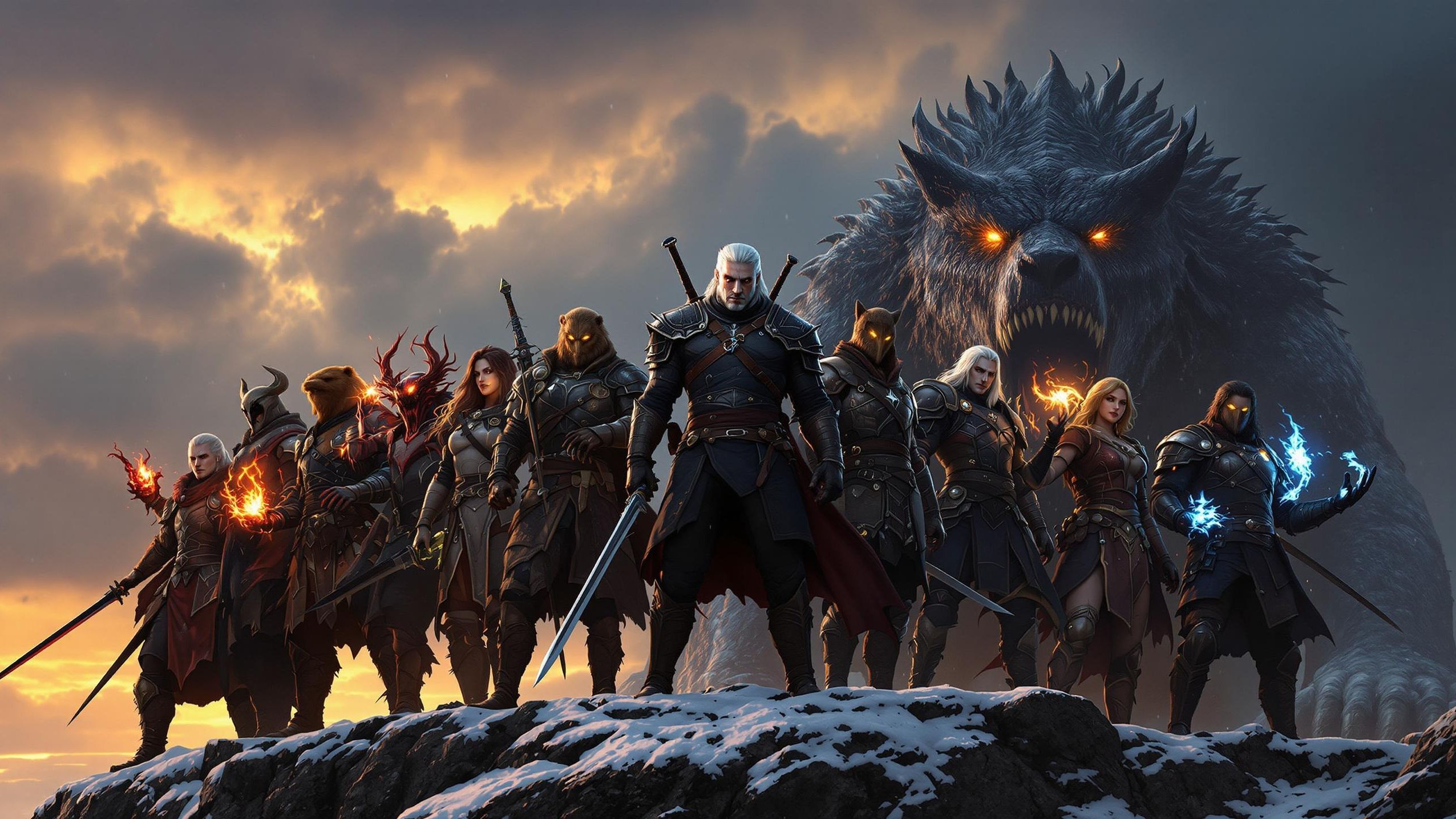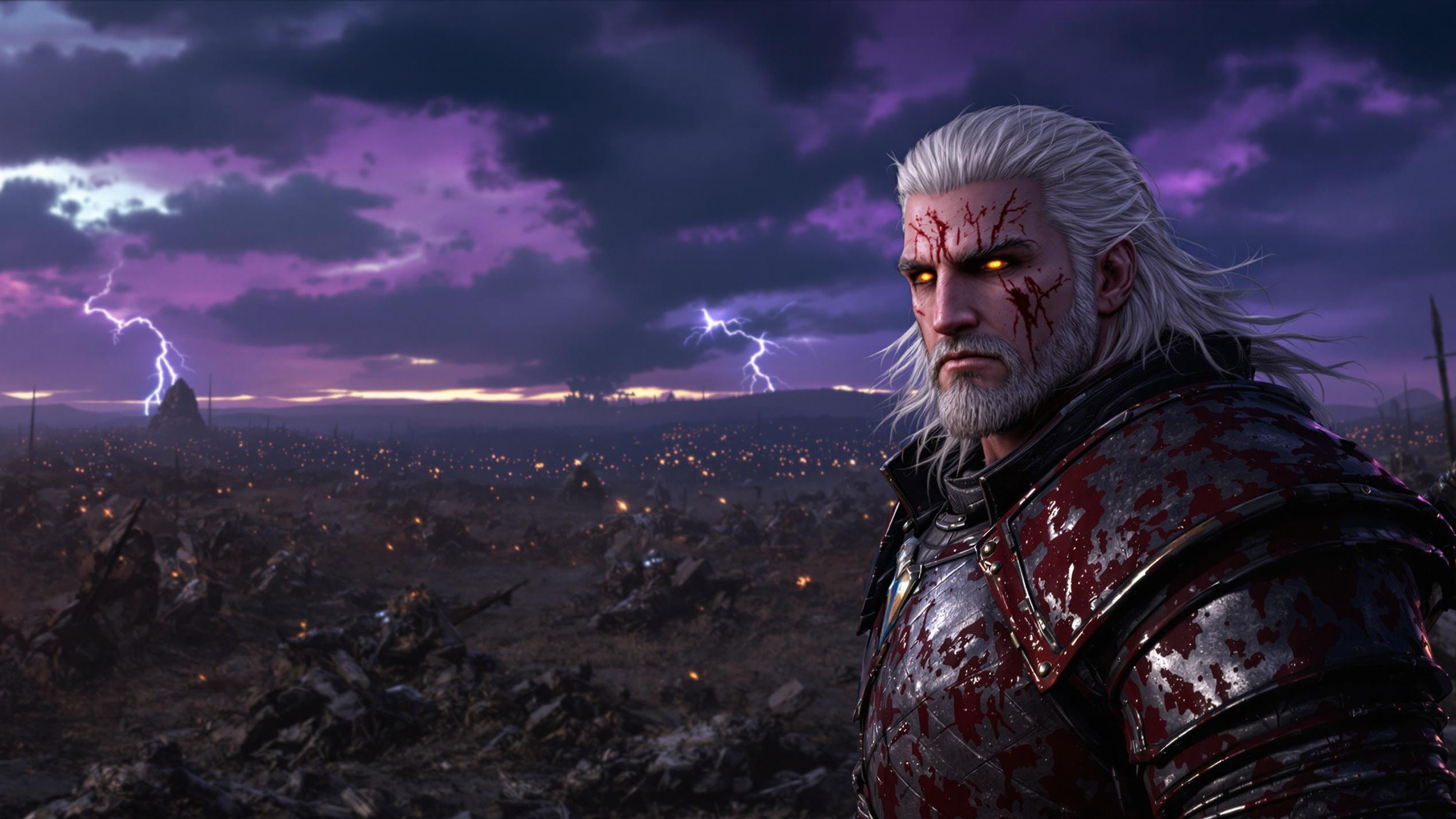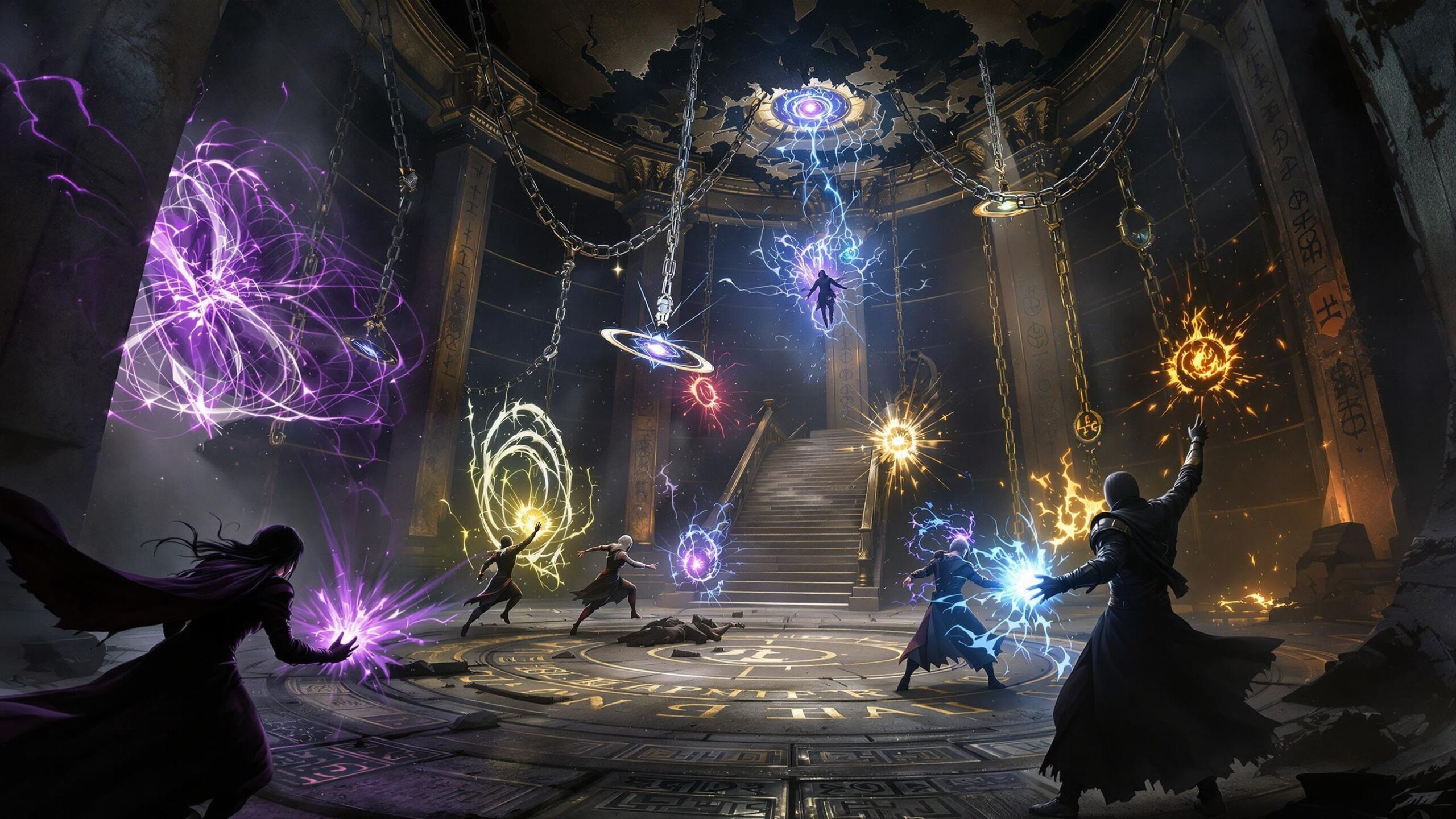The Witcher universe, crafted by Andrzej Sapkowski and expanded through games and adaptations, is filled with legendary monster hunters whose powers, skills, and fates are often shaped by brutal training and moral ambiguity. Witchers are mutants, altered through grueling alchemical trials to battle beasts that plague the Continent. Yet not all Witchers are created equal. Some rose above their peers, not just through combat prowess, but through legacy, cunning, and the impact they left on the world. Here are the ten most powerful Witchers in the universe, ranked by their strength, influence, and legendary deeds.
#10: George of Kagen
Often overshadowed by the more prominent Witchers of the modern age, George of Kagen was a true legend in his own right. Known as the Dragonslayer, George was one of the few Witchers to live long enough to retire—a feat almost unheard of among his kind. His most famous tale involves slaying a golden dragon, an act that earned him fame and fear across the Continent. However, as later revealed, George didn’t kill the dragon out of greed or bloodlust, but out of necessity to protect nearby villagers. This act of reluctant violence sets him apart from other Witchers, suggesting a deeper moral compass. Despite his age, he retained formidable strength, and it’s said his signs were particularly potent. His sword, decorated with dragon motifs, now rests as a relic of a bygone era, symbolizing both power and tragedy. His bones were eventually found by Geralt, preserved in armor—a poignant reminder of the cost of being a Witcher.
#9: Vesemir
As the oldest known Witcher still alive during Geralt’s time, Vesemir was a father figure to many, but don’t let his gray hair fool you—he was a seasoned warrior with centuries of experience. A relic from the days when the School of the Wolf flourished, Vesemir had more knowledge of monsters, potions, and the Witcher code than perhaps anyone alive. He trained generations of Witchers, including Geralt, and his combat skills remained razor-sharp even in old age. What sets Vesemir apart is his wisdom and his ability to lead. In “The Witcher 3: Wild Hunt,” he sacrifices himself to protect Ciri, showing that true strength isn’t just about fighting prowess—it’s about character. He may not be the flashiest Witcher, but his presence was towering, and his death marked the end of an era.
#8: Lambert
Lambert is often seen as the sarcastic, brash younger Witcher, but underneath his cynicism lies impressive strength and raw potential. Trained at Kaer Morhen under Vesemir, Lambert excels in close-quarters combat and is especially lethal with his silver sword. What distinguishes him is his agility and unpredictability—he uses dirty tricks and non-traditional tactics that catch enemies off guard. Despite his attitude, Lambert shows surprising depth in his loyalty to the Wolf School and his companions. He’s also one of the few Witchers known to have gone on a journey of emotional growth, particularly in “The Witcher 3,” where his quest with Keira Metz reveals a more reflective and responsible side. His combat prowess, paired with his resilience and survival instinct, make him a Witcher you underestimate at your own peril.
#7: Eskel
Eskel is often described as Geralt’s equal in skill, and in many ways, that’s true. Though quieter and less flamboyant, Eskel is a master swordsman and a Witcher with deep ties to the School of the Wolf. His scarred face tells tales of battles hard-won, and he often serves as the level-headed counterpart to his more outspoken brothers. In battle, Eskel is a disciplined, focused killer, particularly adept at dealing with cursed creatures and necrophages. He also shows an emotional intelligence rare among Witchers, maintaining a calm demeanor and offering counsel to his fellow monster hunters. Though his death in Netflix’s adaptation was controversial, in the canon lore, Eskel survives longer and remains a respected figure. He exemplifies quiet strength—steady, lethal, and unwavering.
#6: Letho of Gulet
From the School of the Viper, Letho is a hulking brute with unmatched brute strength, but his mind is just as dangerous. Introduced in The Witcher 2: Assassins of Kings, Letho proves he’s not just a powerful warrior, but a master manipulator. Tasked with political assassinations of kings, he weaves a deadly web of intrigue and violence, all while remaining loyal to his ideals. In combat, he is brutal—capable of taking down multiple enemies with ease. His use of signs is more aggressive than subtle, and he doesn’t shy away from using poisons and underhanded methods. Despite his actions, Letho isn’t a villain—he operates with a personal code and shows respect to those who earn it, including Geralt. His blend of political impact and sheer combat strength makes him one of the most dangerous Witchers to ever live.
#5: Coën
Though Coën’s story is less detailed than others, what we do know paints him as a remarkably capable and noble Witcher. Hailing from the School of the Griffin, Coën was one of the few Witchers who actively helped train Ciri during her time at Kaer Morhen. His fighting style leaned on precision and teamwork, and he was known for his kind heart—a rarity among his kind. In the books, Coën meets a tragic end at the Battle of Brenna, where he dies protecting the wounded. His death is mourned by many, and his role in preparing Ciri for her destiny cannot be overstated. While not as famous as Geralt or Letho, Coën’s legacy lies in his character and courage, elevating him to one of the most honorable and capable Witchers in the lore.
#4: Gaetan
A Witcher from the School of the Cat, Gaetan stands out for reasons both brutal and tragic. Unlike the more disciplined and principled Witchers from Kaer Morhen, Gaetan’s training was shaped by the cutthroat philosophy of the Cat School—survival at any cost. He is fast, deadly, and clever, utilizing ambush tactics and misdirection in battle. His story, explored in The Witcher 3: Wild Hunt, reveals a layered character whose descent into moral ambiguity mirrors the dark evolution of his school. After a massacre gone wrong, Gaetan is left emotionally and physically scarred, and his reappearance in the quest “Where the Cat and Wolf Play…” is haunting. Players are given a moral choice: let him go or end his life. This moment encapsulates Gaetan’s power—not just his martial skills, but the emotional weight he carries as a symbol of how far a Witcher can fall. His raw talent, tragic backstory, and the threat he poses even to other Witchers make him one of the most dangerous individuals in the Continent’s dark history.
#3: Ciri
While not a traditional Witcher by mutation, Cirilla Fiona Elen Riannon—better known as Ciri—is arguably more powerful than any Witcher could ever hope to be. Trained in swordplay and monster hunting at Kaer Morhen, Ciri possesses the combat reflexes, speed, and instincts of a Witcher, but her Elder Blood heritage places her in a completely different league. She can teleport across space and even travel between worlds—abilities no other Witcher has ever wielded. Ciri’s importance transcends physical battles; she’s a key figure in the fate of the entire Continent. In both the books and The Witcher 3, she demonstrates immense growth, mastering her powers and resisting those who would use her as a pawn. Her strength is amplified by emotional resilience and sheer willpower, forged through trauma, loss, and training under Geralt and Yennefer. Though some purists debate her inclusion on a Witcher list, her upbringing at Kaer Morhen, her use of Witcher combat styles, and her deep ties to the order make her more than worthy. Ciri is not just powerful—she’s a force of destiny.
#2: Geralt of Rivia
The White Wolf, the Butcher of Blaviken, the man who would rather not choose but ends up changing the world—Geralt is the face of the Witcher legacy. Mutated more heavily than most Witchers, Geralt gained enhanced speed, strength, and stamina far beyond the standard. He’s a master of the sword, a formidable alchemist, and highly adept with signs. But it’s his moral compass and emotional depth that truly set him apart. Geralt doesn’t just kill monsters—he questions what makes someone monstrous. He’s forged alliances, mentored Ciri, loved deeply, and challenged kings and mages alike. His adventures across the books and games—especially The Witcher 3: Wild Hunt—solidify him as a complex, often tormented hero who doesn’t seek glory but still earns it. Despite his power, Geralt often wins not by brute force but through intelligence, empathy, and adaptability. He has fought gods, beasts, and destiny itself—and still comes out standing. If power is measured by deeds and influence, Geralt is nearly unmatched.
#1: Eredin’s Nightmare – The “Witcher Prototype”
Before the modern Witchers of the schools we know today, there existed the prototype experiments—the first men to survive the original mutation processes. Among them, one unnamed figure has become legend: a Witcher who predated the Wolf, Cat, and Griffin Schools, and who faced off against ancient monsters long since extinct. Though his name is lost to time, this Witcher’s feats are whispered of in old tomes and among elder mages. He’s said to have hunted manticores with his bare hands and destroyed a leshen so powerful it warped the surrounding forest into a haunted realm. Unlike modern Witchers, he had no signs, no support structure—only alchemy, steel, and sheer will. While not present in games or TV adaptations, his legacy looms in the background of Sapkowski’s world. He represents what it truly meant to be a Witcher in its rawest, most unforgiving form. Without him, the path wouldn’t exist. For sheer survival, pioneering power, and mythic stature, this Witcher prototype earns the number one spot—not for fame, but for being the origin of all others.




